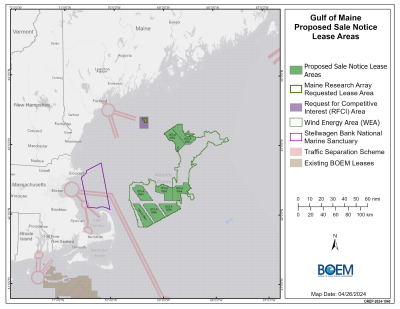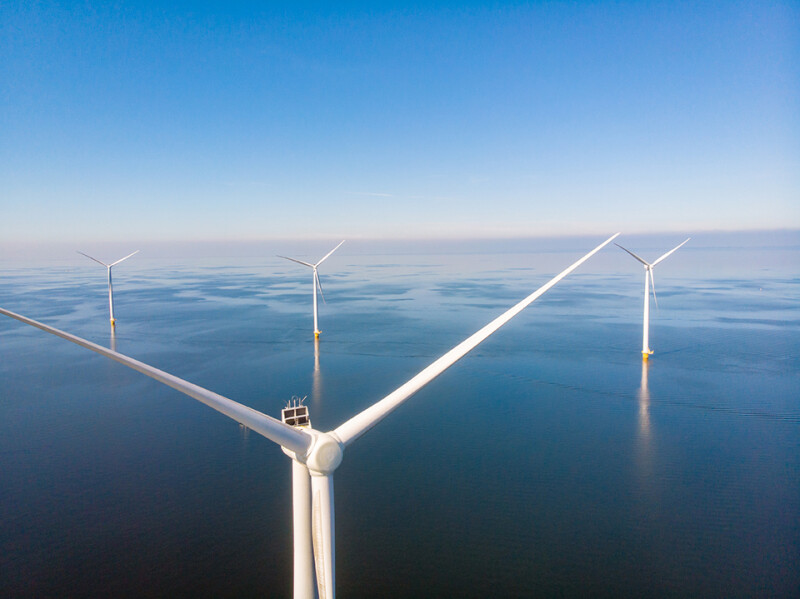Ocean grabbing is a term frequently used in relation to the takeover of the ocean commons by private interests. While the Department of the Interior’s April 30 announcement that it would sell one million acres of leases for offshore wind power development in the Gulf of Maine may have come as a shock to some, it’s been in the pipeline since 2010.
The proposal has moved ahead in spite of a Bureau of Ocean Energy Management (BOEM) determination of no competitive interest for Gulf of Maine Research Lease Applications as recently as March 2023. Over the past year, BOEM has forged on, developing a wind leasing process for the Gulf of Maine, conducting a draft environmental review and analysis of the Gulf of Maine, and finalizing the wind energy area for the Gulf.

While the announcement surprised many fishermen, Jerry Leeman, founder and CEO of the New England Fishermen’s Stewardship Association, has been tracking it and making announcements, such as a posting on July 12, 2023, on the NEFSA website calling on all harvesters to attend the BOEM hearings in New England. “We must make our voices heard and say no to offshore wind. By not attending, we’re doing a disservice to our livelihoods and the wildlife in the New England waters,” says the press release.
How many fishermen ever saw or answered the call is unknown, and Leeman is not surprised when they don’t participate. “I think a lot of people feel that they come to the meetings, they say their piece, and nobody’s listening. NEFSA represents over 1,000 members, but when tried to get a meeting with BOEM, they couldn’t talk to me.”
Leeman has many questions. “We don’t have a baseline assessment. We don’t have all the data from the 12-turbine experimental wind farm here in Maine, and yet they are charging ahead with this.”
According to Leeman, the environmental assessment is ignoring potential impacts of the turbines. “The intake openings on the cooling systems for the DC/AC converter are 27 square feet, for example, and the water that comes out is 86 degrees [Fahrenheit] and has chlorine in it, and this system is 100 percent lethal to all plankton.” Leeman believes that as Gulf of Maine waters cycle through the lease areas over time, the killing of plankton will be just one of the lasting impacts the turbines will have on the ecosystem.
“And now they want to change the way we manage cod,” says Leeman. “So that boats under 65 feet will either be concentrated in Wilkinson’s Basin or have to transit through the lease area to access the eastern quota.” Leeman notes. “Those smaller boats will be outside their historical range, and that goes against National Standard 10, which is safety.”
The 60-day comment period began on May 1 and runs until July 1. According to BOEM, individuals may comment by navigating to Regulations.gov and searching for BOEM-2024-0026, or by attending one of the BOEM public meetings listed here.







